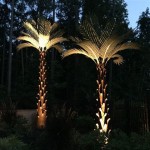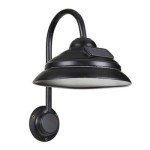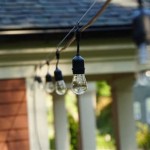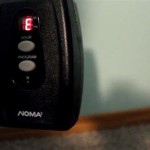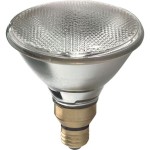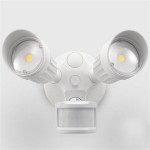How to Wire Outdoor Spot Lights
Outdoor spot lights enhance landscape features, improve security, and add ambiance to outdoor spaces. Proper wiring is crucial for safety and optimal performance. This guide outlines the process of wiring outdoor spot lights, covering essential steps and safety precautions.
Planning and Preparation: Before commencing any electrical work, carefully plan the layout and wiring scheme. Determine the desired location of each spot light and measure the distances between them and the power source. Calculate the total wattage of the lights to ensure the chosen transformer and wiring can handle the load. Select appropriate outdoor-rated wiring, connectors, and a weatherproof transformer.
Safety First: Electrical work poses inherent risks. Always turn off the power at the breaker box before working with any electrical wiring. Use a voltage tester to confirm the power is off. Wear appropriate safety gear, including insulated gloves and eye protection.
Choosing the Right Transformer: Low-voltage landscape lighting typically operates at 12 volts. Select a transformer with sufficient wattage to power all connected lights. The transformer's wattage should be at least 20% higher than the total wattage of the lights to allow for future expansion or prevent overloading. Choose a location for the transformer that is protected from the elements and easily accessible.
Running the Cable: Outdoor lighting cable should be buried at least 6 inches deep to protect it from damage. Use a shovel or trenching tool to create a pathway for the cable. Consider using conduit for added protection, especially in areas with heavy foot traffic or potential ground disturbance. Run the cable from the transformer to the first light fixture, leaving adequate slack for connections.
Connecting the Wires: Use waterproof wire connectors designed for outdoor use. Strip the insulation from the ends of the wires using wire strippers. Carefully connect the wires according to the manufacturer's instructions, ensuring a secure and watertight connection. For low-voltage lighting, this typically involves matching the polarity of the wires.
Installing the Spot Lights: Mount the spot lights according to the manufacturer’s instructions. Ensure they are securely fastened and positioned for optimal illumination. If the fixtures involve ground stakes, drive them firmly into the ground. Connect the wires from the cable to the fixture's wiring terminals, again ensuring correct polarity and secure connections.
Continuing the Circuit: Run the cable from the first light to the next, repeating the connection process. Continue this process until all lights are connected in the desired configuration. Several wiring configurations are possible including series, parallel, and combinations thereof. Parallel wiring is generally preferred for landscape lighting as it ensures consistent brightness even if one light fails.
Connecting to the Transformer: Once all lights are wired, connect the main cable to the transformer's output terminals. Again, ensure correct polarity and tight connections. Close the transformer's weatherproof cover securely.
Testing the System: After all connections are made, turn the power back on at the breaker box. Check that all lights are functioning correctly. If any lights do not illuminate, check the connections for tightness and correct polarity. If problems persist, recheck the entire wiring circuit for potential faults.
Grounding: Proper grounding is essential for safety. The transformer should have a grounding wire connected to a grounding rod or other suitable grounding point. This protects against electrical shocks in case of a fault.
Using a GFCI Outlet: For added safety, consider connecting the transformer to a Ground Fault Circuit Interrupter (GFCI) outlet. A GFCI outlet will automatically shut off the power if it detects a ground fault, preventing potentially dangerous electrical shocks.
Maintaining Your Outdoor Lighting System: Regularly inspect the wiring and connections for signs of damage or wear. Replace any damaged components promptly. Keep vegetation trimmed around the fixtures to prevent overheating and potential fire hazards. Periodically clean the lenses of the spot lights to maintain optimal light output. Understanding local codes and regulations pertaining to outdoor electrical installations is also crucial.
Seeking Professional Assistance: While many homeowners can successfully install outdoor spot lights, complex installations or those involving high-voltage wiring may require the expertise of a qualified electrician. Consulting a professional can ensure the job is done safely and correctly, complying with all applicable codes and regulations.

Connecting Cur Controlled Led Spotlights Do S And Don Ts Customer Service Q

Connecting Cur Controlled Led Spotlights Do S And Don Ts Customer Service Q

Plug And Play 2w Brass Garden Led Spike Spot Light Kit 6 Lights 190 Lumens Each From Landscape Lighting

How To Wire A Floodlight

Installing Ground Spotlights Lampandlight

Our Home From Scratch

Techmar Focus Garden Led Post Light Kit

Pilsen Garden Spotlight Silver H110 Illumination Co

Techmar Focus Verona 12v Plug Play Garden Spotlights Bundle 6 Light Kit

Led Outdoor Spotlight With Ground Spike And Mains Cable 240v Landscape Garden Lights
Related Posts
